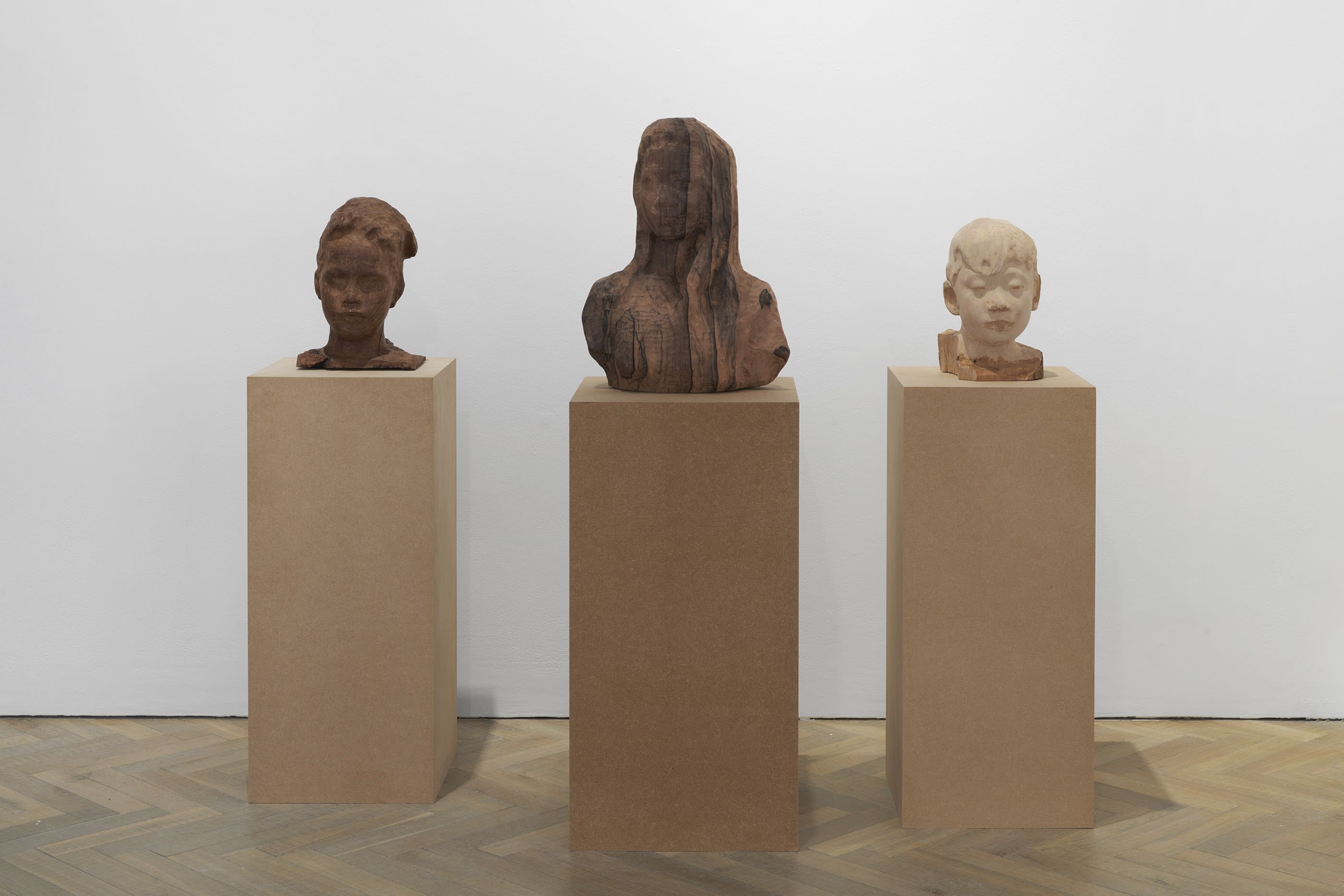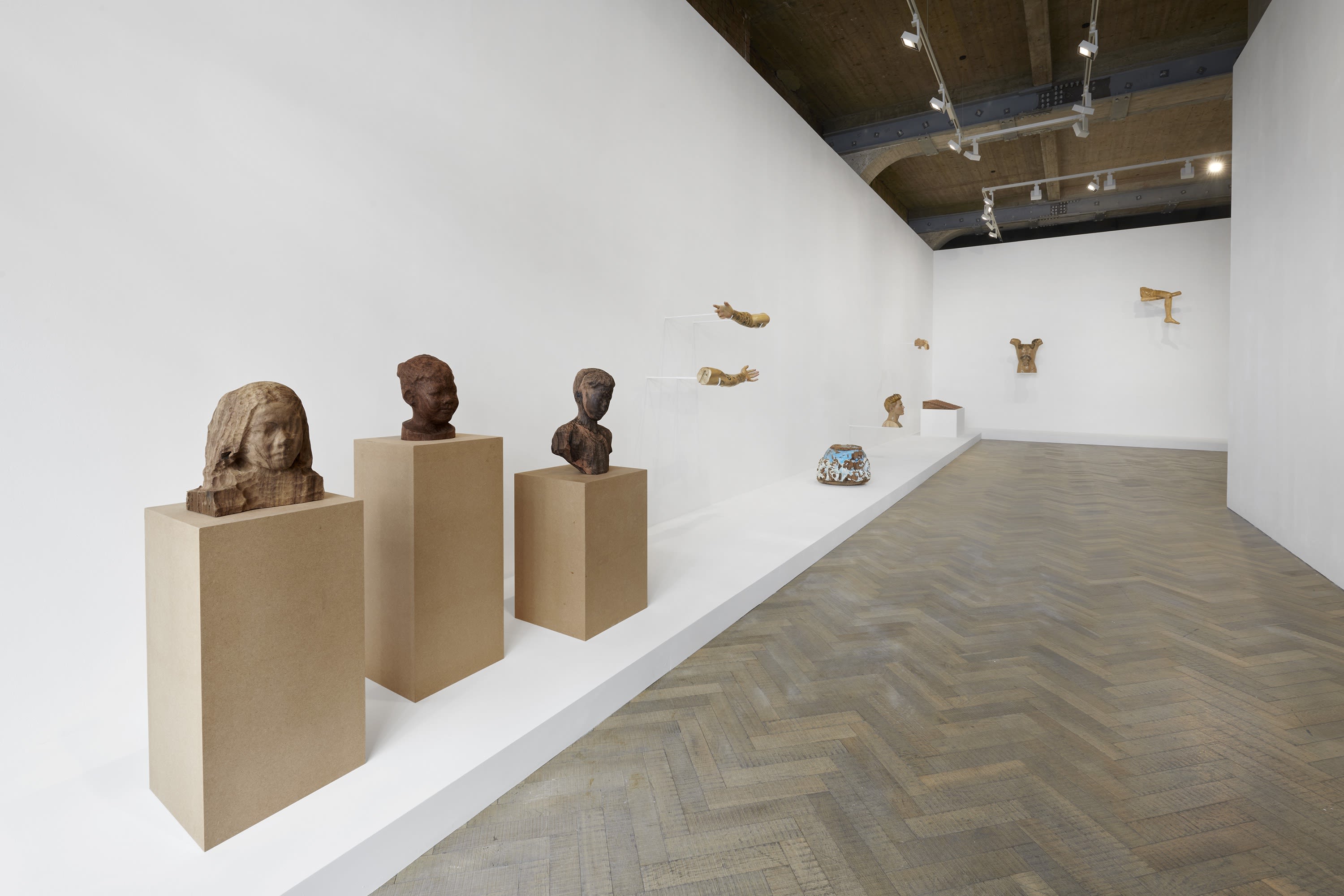-

-
 Installation view, Thomas Dane Gallery, London, 2021
Installation view, Thomas Dane Gallery, London, 2021 -
'To me, the word "Incarnator" is about production. The production of an image. The production of human flesh... What interests me is what production means in 21st century global capitalism, where the means of production have been radically separated from their natural function. This is Marx in the 21st century perfected into a global scheme; a branded production, where innocence is turned into a profit-making system in the face of a child.'
– Paul Pfeiffer in conversation with Diana Campbell Betancourt
-

Justin Bieber Torso, 2018, Gmelina wood, paint, 62.4 x 48.7 x 23.2 cm
-
 Installation view, Thomas Dane Gallery, London, 2021
Installation view, Thomas Dane Gallery, London, 2021 -

Justin Bieber Head, 2018, Santol wood, 41.2 x 20.5 x 22.3 cm
-
 Installation view, Thomas Dane Gallery, London, 2021
Installation view, Thomas Dane Gallery, London, 2021 -

Incarnator, 2018, digital video, colour, sound [still]
-

Carl, 2018, 3D print duplicated in Kamakong wood, 47.3 x 36.7 x 19.5 cm
-
 Installation view, Thomas Dane Gallery, London, 2021
Installation view, Thomas Dane Gallery, London, 2021 -

Incarnator, 2018, digital video, colour, sound [still]
-
 Installation view, Thomas Dane Gallery, London, 2021
Installation view, Thomas Dane Gallery, London, 2021 -

Leg on Tree Branch, 2018, Gmelina wood, 71.2 x 55 x 34.8 cm
-
 Installation view, Thomas Dane Gallery, London, 2021
Installation view, Thomas Dane Gallery, London, 2021 -
Incarnator was initiated during the artist’s six-month residency at Bellas Artes Projects in Bagac, Bataan, Philippines in 2018. The work was originally exhibited at Bellas Artes Outpost, Manila, curated by Diana Campbell Betancourt.
-

-
List of Works
For exhibitions and sales enquiries please contact Tom Dingle: tom@thomasdanegallery.com
For press inquiries please contact Rachel Adams: rachel@thomasdanegallery.com
Image credits: Installation views at Thomas Dane Gallery, photo by Ben Westoby; all others, photo by At Maculangan, courtesy of Bellas Artes Projects, Manila.




















